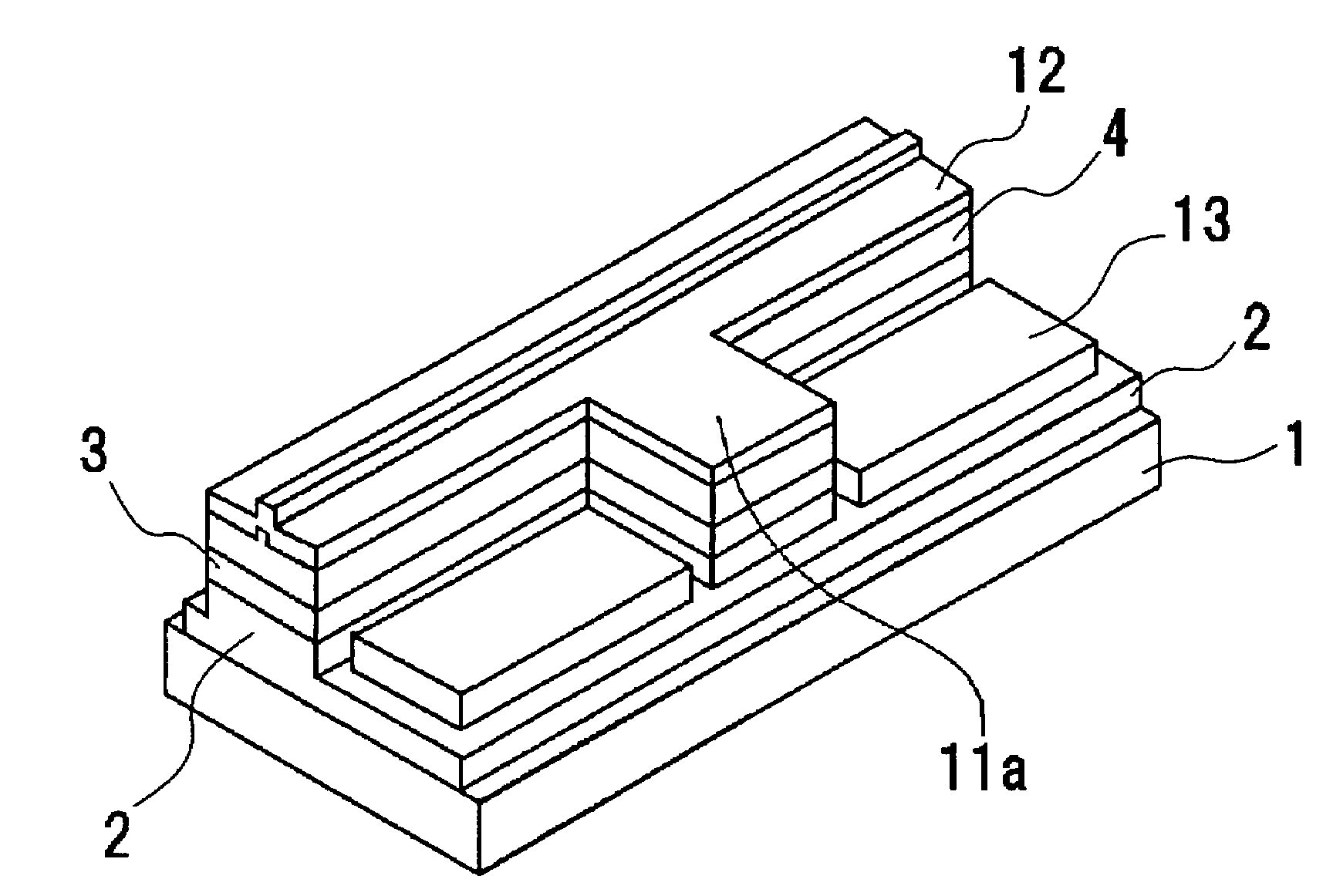Semiconductor laser device
a laser device and semiconductor technology, applied in the direction of lasers, semiconductor laser structural details, semiconductor lasers, etc., can solve the problems of limited field in which this device can be applied, and the characteristics of the semiconductor laser cannot be satisfied, so as to reduce shorten the time needed for laser drive initiation. , the effect of reducing the time needed for warm-up
- Summary
- Abstract
- Description
- Claims
- Application Information
AI Technical Summary
Benefits of technology
Problems solved by technology
Method used
Image
Examples
embodiment 1
[0059]As shown in FIGS. 1 and 2A, the semiconductor laser device of this embodiment is formed by sequentially laminating an n-type semiconductor layer 2 that is the first conductive type semiconductor layer, an active layer 3, and a p-type semiconductor layer 4 that is the second conductive type semiconductor layer on a substrate 1.
[0060]A portion of the n-type semiconductor layer 2 is removed in the film thickness direction, as well as portions of the active layer 3 and the p-type semiconductor layer 4 disposed thereon. In addition, a stripe shaped ridge 5 is formed on the upper surface of the p-type semiconductor layer 4.
[0061]A first insulating film 6 is formed on the upper surface of the p-type semiconductor layer 4, and covers the lateral surfaces of the ridge 5 but not the upper surface thereof. In addition, an n-type ohmic electrode 7 that is partially connected with the n-type semiconductor layer 2 is formed on the upper surface of the n-type semiconductor layer 2 from which...
embodiment 2
[0093]As shown in FIG. 2B, the semiconductor laser device of this embodiment is substantially the same as the semiconductor laser device of FIGS. 1 and 2A, except that a portion of the n-type semiconductor layer 2 in the depth direction, the active layer 3, and the p-type semiconductor layer 4 are formed into a stripe shape, a second electrode 12′ is formed on this laminated structure, and a projection 11a′ of a pad electrode that forms the second electrode 12′ is disposed across the top of the n-type semiconductor layer 2 via an insulating layer (not shown in the figure).
[0094]The semiconductor laser device described above can be formed by substantially the same method as described above. Note that after the pad electrode is formed, the semiconductor layers are etched by RIE until the sapphire substrate is exposed in a mesh pattern in order to make the semiconductor layers chip sized. At this point, the laser discharge surface will be etched directly in front of the laser discharge...
PUM
 Login to View More
Login to View More Abstract
Description
Claims
Application Information
 Login to View More
Login to View More - R&D
- Intellectual Property
- Life Sciences
- Materials
- Tech Scout
- Unparalleled Data Quality
- Higher Quality Content
- 60% Fewer Hallucinations
Browse by: Latest US Patents, China's latest patents, Technical Efficacy Thesaurus, Application Domain, Technology Topic, Popular Technical Reports.
© 2025 PatSnap. All rights reserved.Legal|Privacy policy|Modern Slavery Act Transparency Statement|Sitemap|About US| Contact US: help@patsnap.com



